West Side Story
We explored the western side of the Park today, on the advice of a Ranger who felt it was exemplary of what the Park was all about. While I can say it was a good experience, my personal summary of the west side (Wetherhill Mesa) is that it’s more primitive and remote – – and consequently, it has the ability to more deeply convey the sense of the life led by the Anasazi. So maybe he’s right.
The Mesa Verde National Park itself has been plagued by the typical forest-fire problems that beset virtually the entire United States. Too much fire suppression, then too much “duff” buildup, then catastrophic fires rather than the more natural burn-off fires from summer lightning. Add to this the strained relationship between Park and Ute Nation fire-fighters, and you get a LOT of burn.
This scenario is very common throughout the Park. The bad news is the ugly snags. The good news is the new, fresh growth. Sadly, these pinion-pine forests are very slow to regenerate. A twelve-foot tree can take 100 years to grow. As of today, more than 40% of the park has been burned.
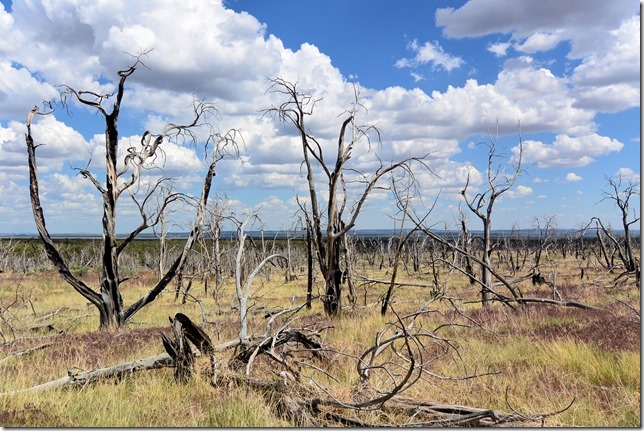
Turning off the main mesa road, we were immediately struck by the “shrinkage”. The road was smaller, more twisty, steeper. I had to drop Ralph into first gear (!) in several places that were roller-coaster steep. But it’s a beautiful drive, lonely, and a bit evocative of the land of the Ancients.
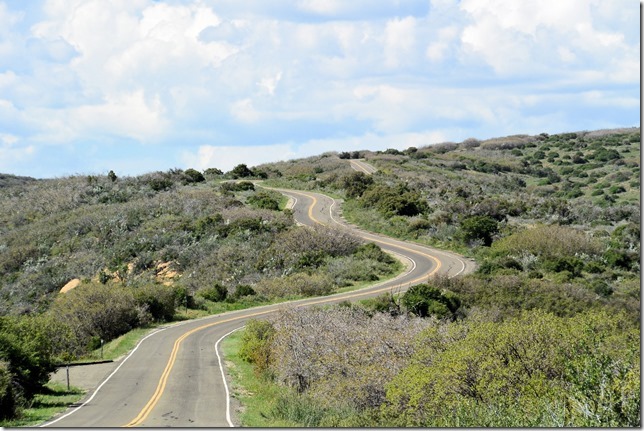
Other things driven home during our explorations: Once again, we were amazed at the Anasazi’s extensive population coverage in this area. Sites (villages, enclaves, population centers) were everywhere in the region. And once again, we were made aware of the progression of technology in this primitive stone-age culture. First, brush-and-mud; second, pit-and-roof; third, above-ground buildings; and fourth, the famous cliff-dwellings (really above-ground buildings built in canyon alcoves. Here’s a re-built pit-and-roof structure called a pit-house.
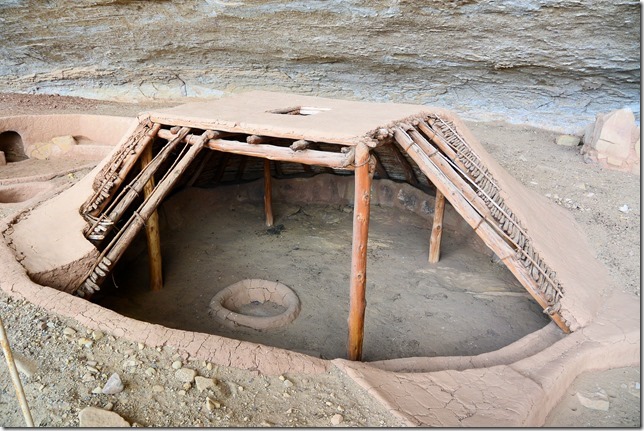
An odd side-story that illustrates how much work is required to keep all these displays available: This fine mesh netting was placed over some structures, and when I asked about it, I was told that the local bees (a specific species) liked to burrow holes into the soft sandstone. Although this is “natural”, it would denigrate the ancient structures, so it’s being discouraged.

Yet another effort to preserve the ruins: a rock channel in the flat above an alcove, to divert natural run-off during rains and snow-melts. Anything to help keep the ruins alive and un-damaged.
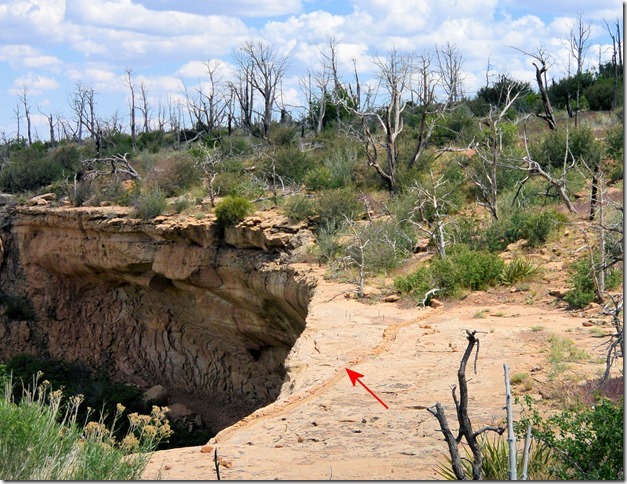
Horses are NOT indigenous to the area, and ecologists eschew their presence. Wild-west-lovers use emotional pleas to preserve them. The Utes let them run wild and feral, and the water and browse in the Park attract them. Result: plenty of wild/feral/trespass horses. You can call it charming or invasive, or anything in between. (I just photograph them.)
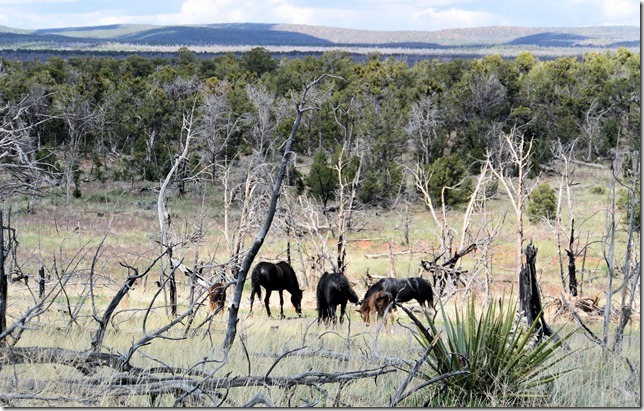
Here is a classic example of the cliff-dwellers’ modus operandi. Build in an area that is eminently defensible of attacks from below or above; pay for this safety with arduous climbs up the cliff faces to tend crops on the mesa that forms your roof. (Long House) The tiny spatter of color at the right end of the ruins is a crowd of about 30 people. This enclave would have housed about 100.
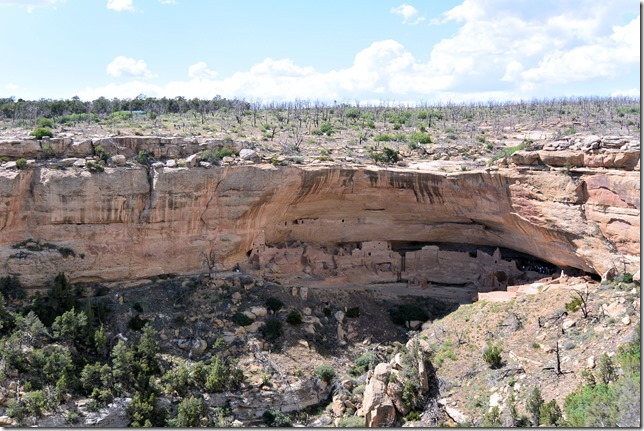
During our visit, these pests were EVERYWHERE, almost at plague proportions. I can only hope they are feeding the local birds and lizards, which are also extremely plentiful. They get smashed on the roads a lot too, and the crows and ravens pick them up right away.
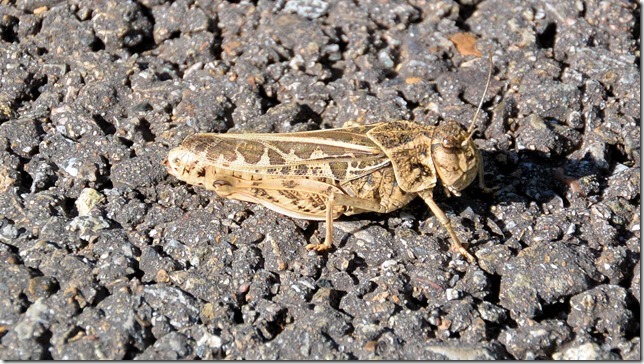
Just before arriving back in camp at the end of the day, we took a side trip to the highest point in the Park (8575). Here, just below the watchful eye of the fire-watch, we gazed out at the promontories at the northeast corner of the Park boundary. In the eastern distance, 30 miles away, the snow-capped beginnings of the Rocky Mountains dotted the horizon. Gorgeous cumulus speckled the sky with contrast, depth, character.
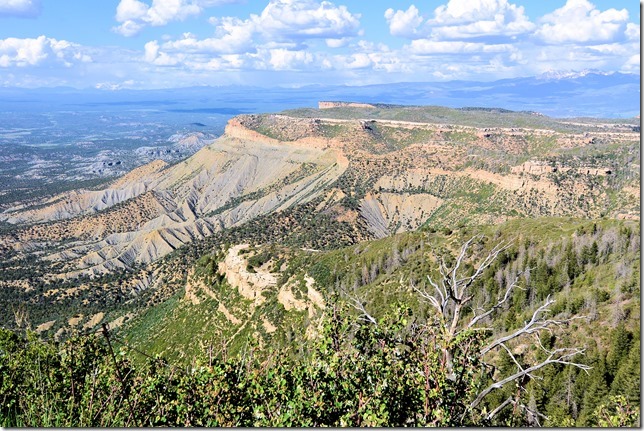
We stood there, soaking it all in, reveling in where we were, and what we were able to do.
Life is good.
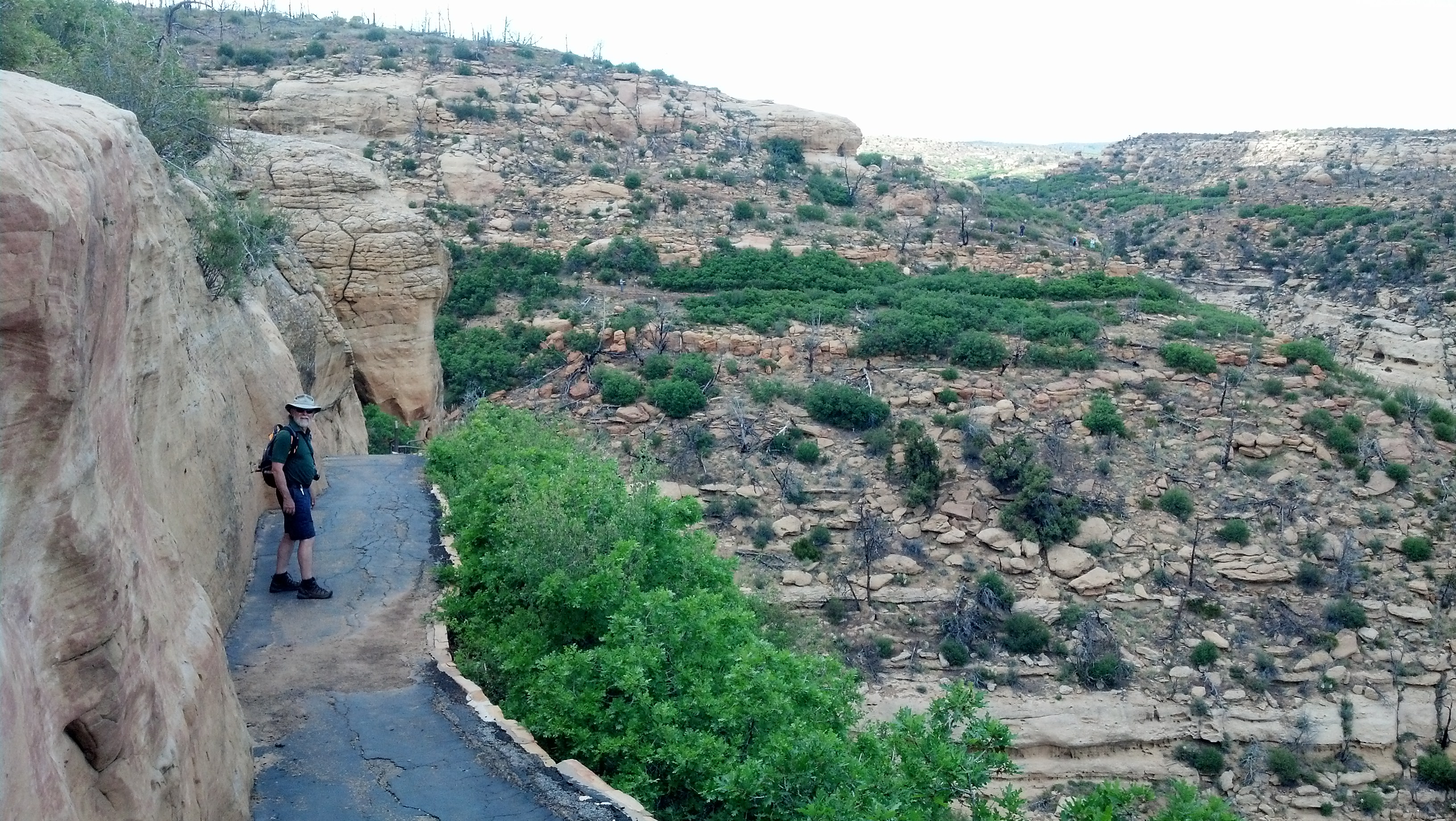
Good day! I just want to give you a huge thumbs up for the great info you have here on this post.
I’ll be coming back to your blog for more soon.
Hey there would you mind letting me know which web host you’re working
with? I’ve loaded your blog in 3 different internet browsers and I must say this blog loads a
lot faster then most. Can you recommend a good internet hosting
provider at a fair price? Cheers, I appreciate it!
Sorry for the delayed response (traveling, of course). My web site is hosted by ipage, I’m pretty happy with them. The blog is driven by WordPress.org directly from my site.
I didn’t observe my “web site ” above. I just don’t use it…….
The last shot is really nice to get a perspective on the vastness of the park. Quite beautiful.